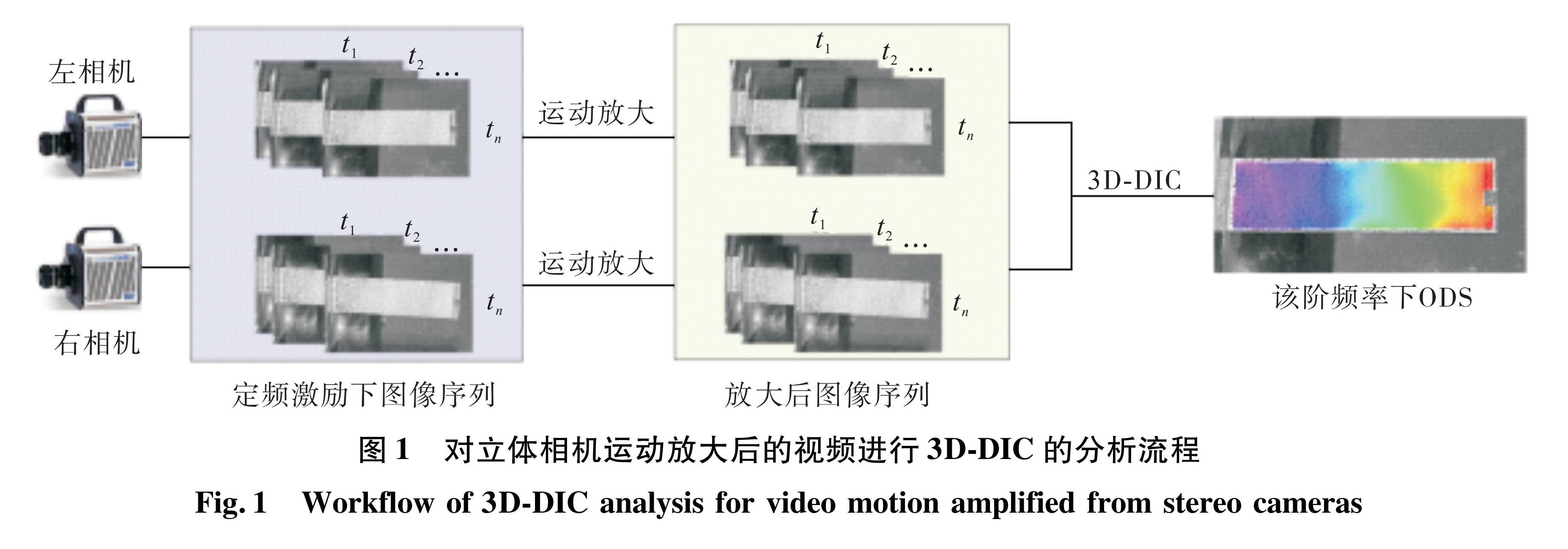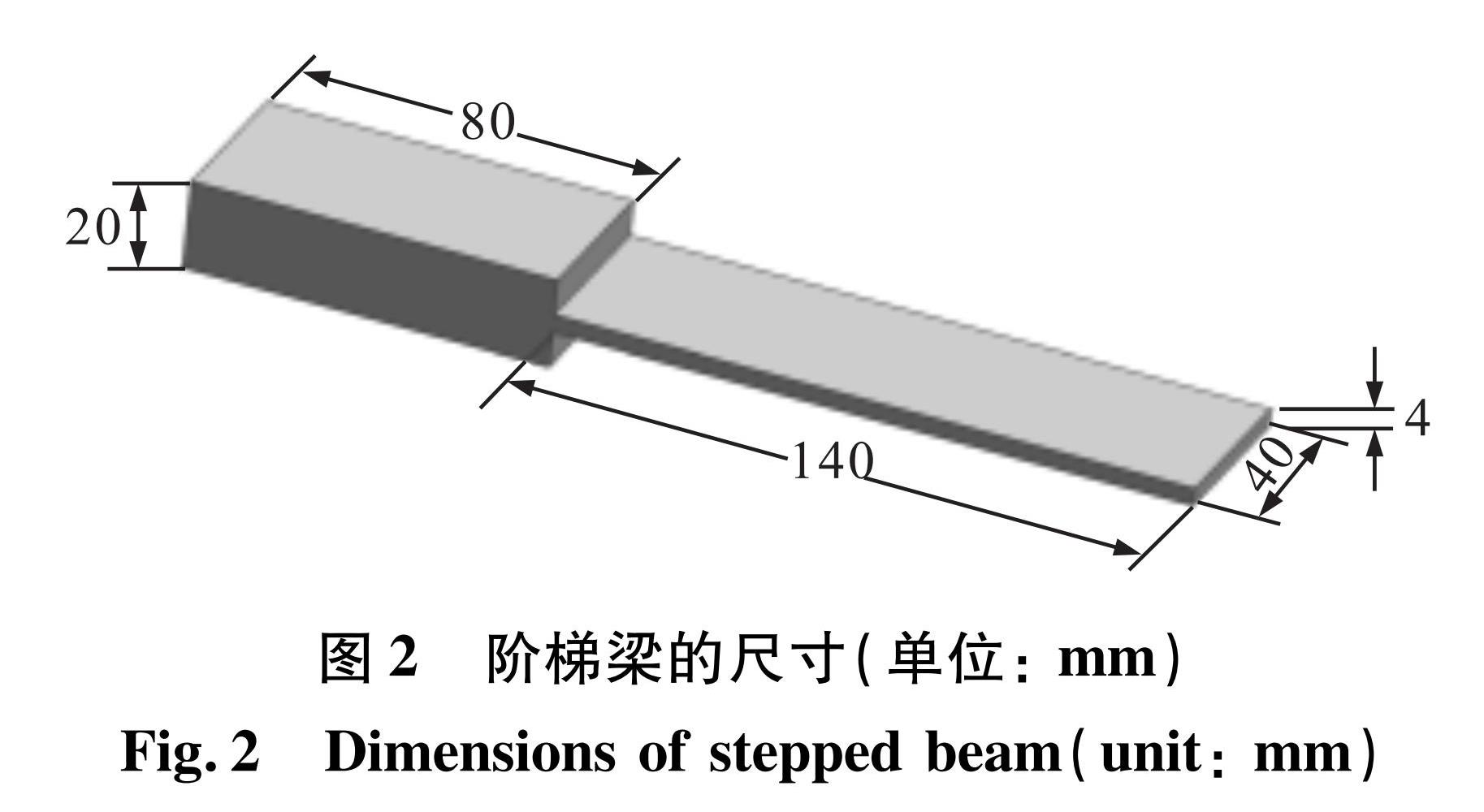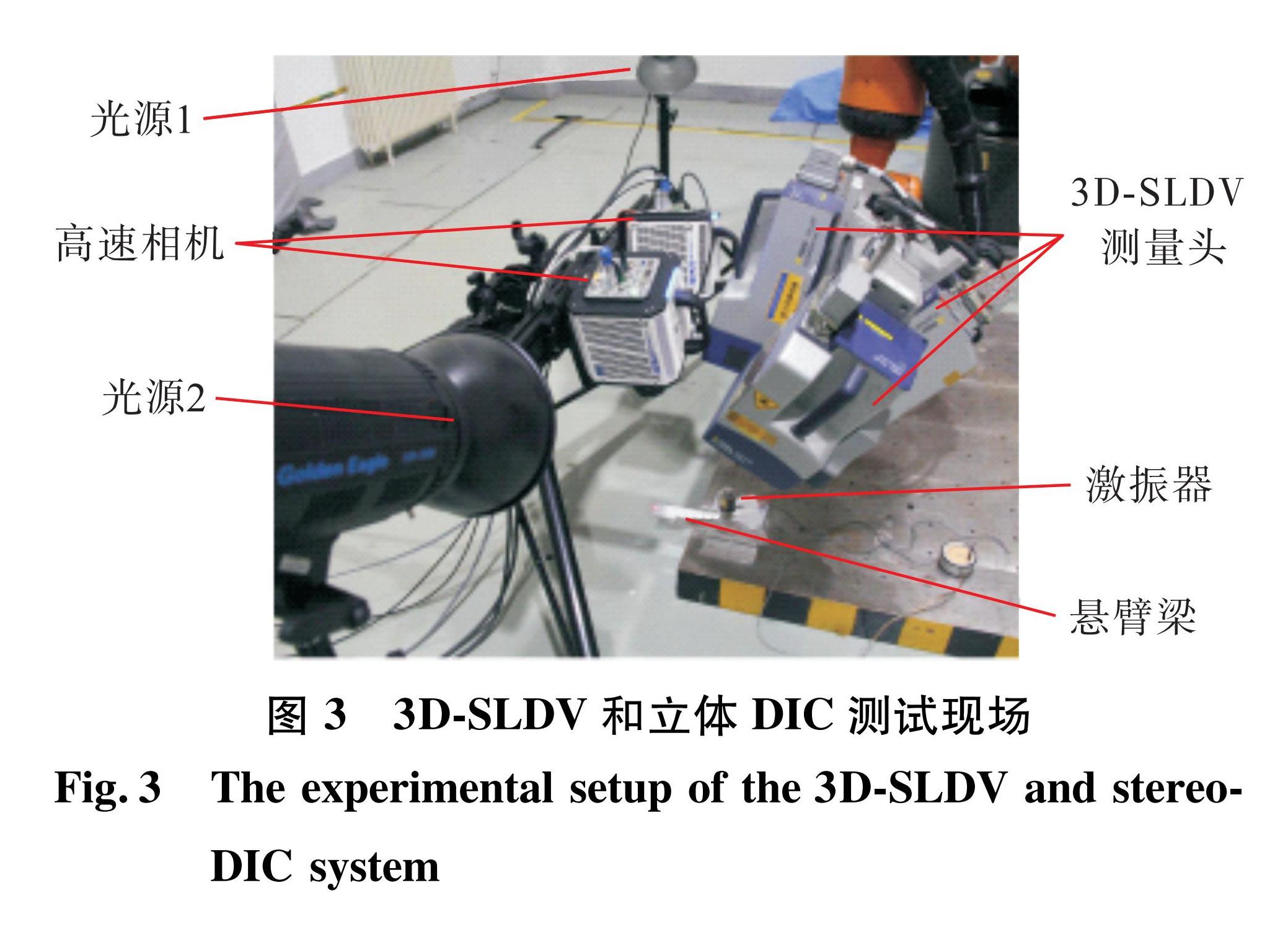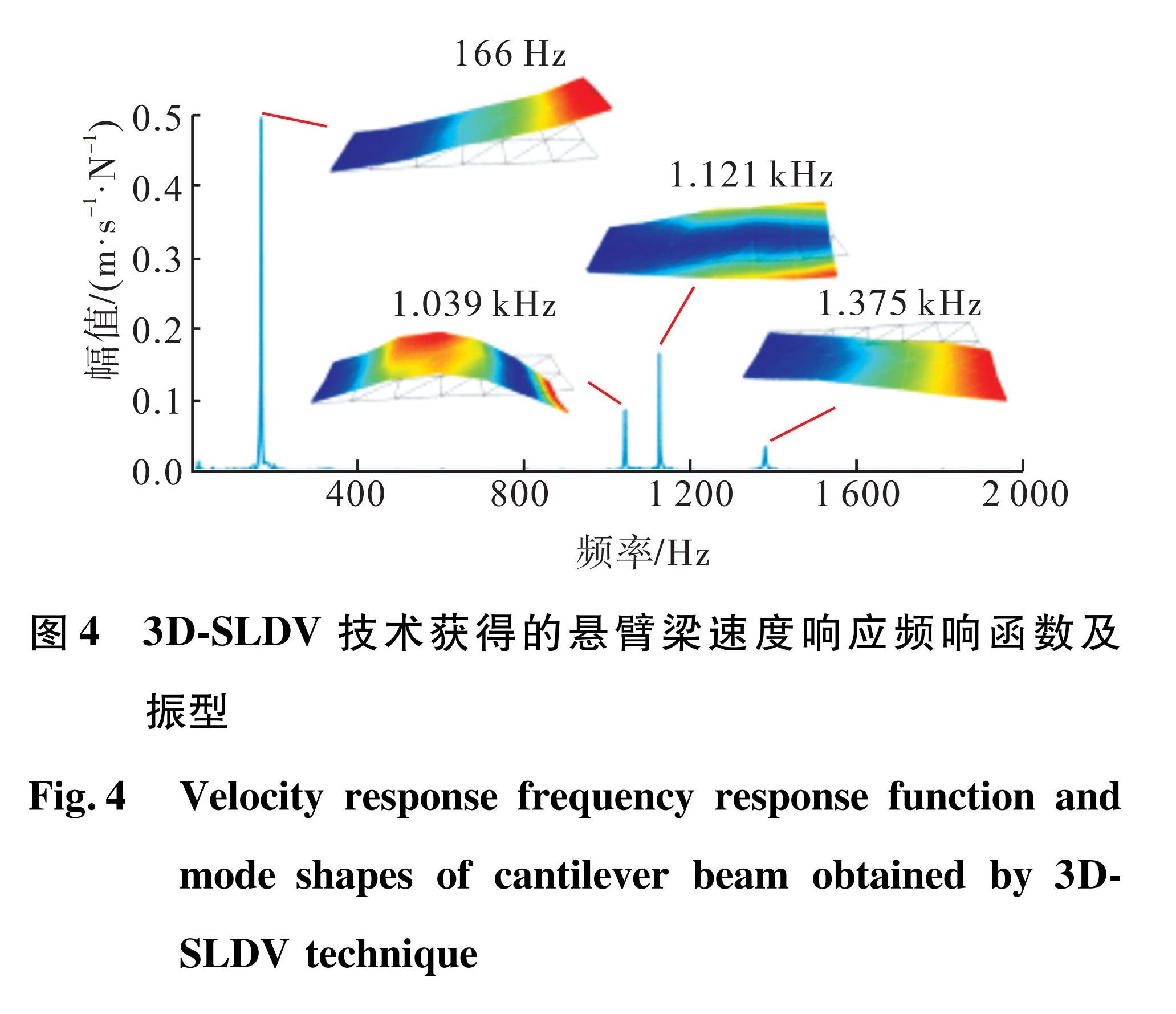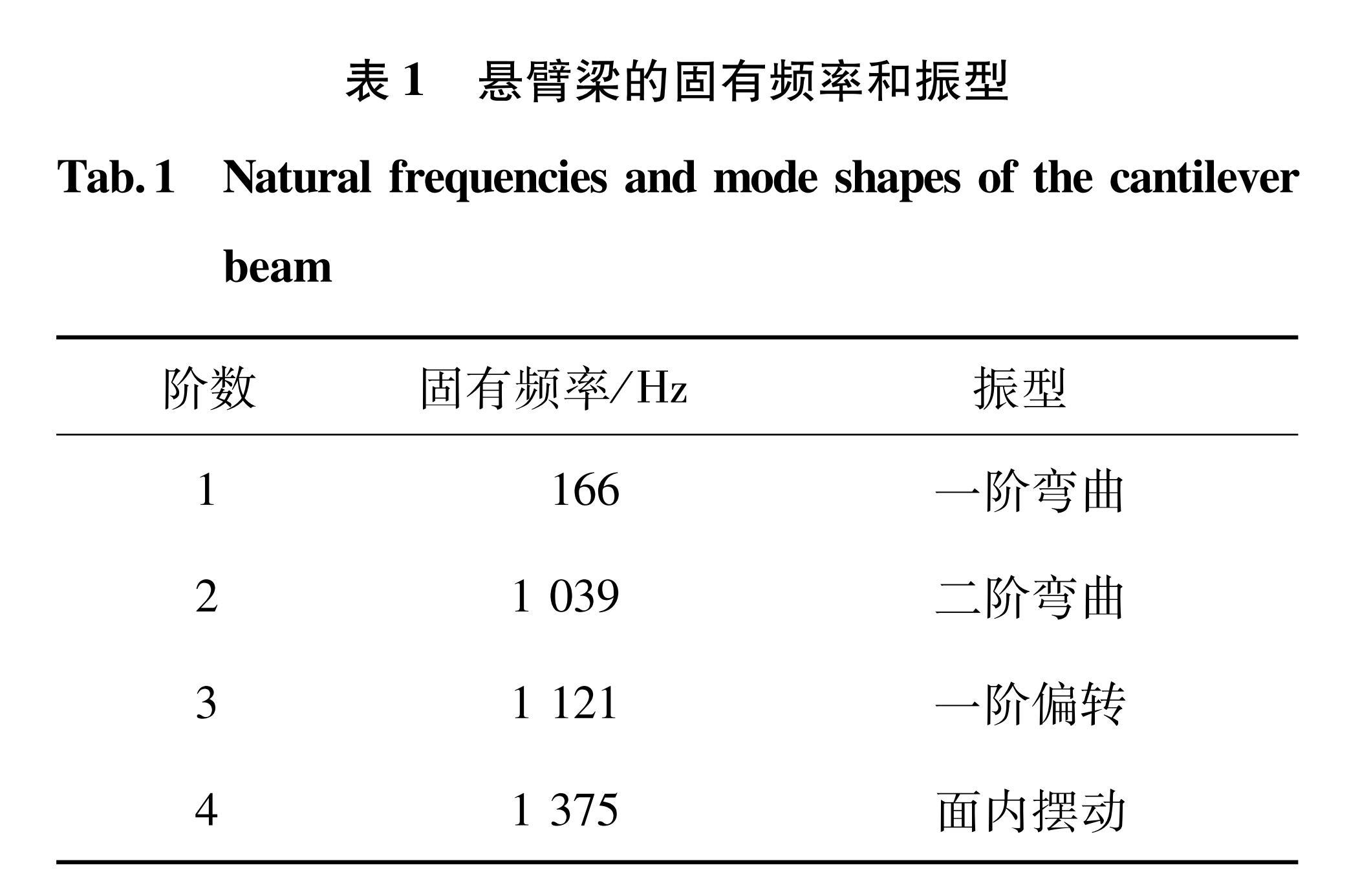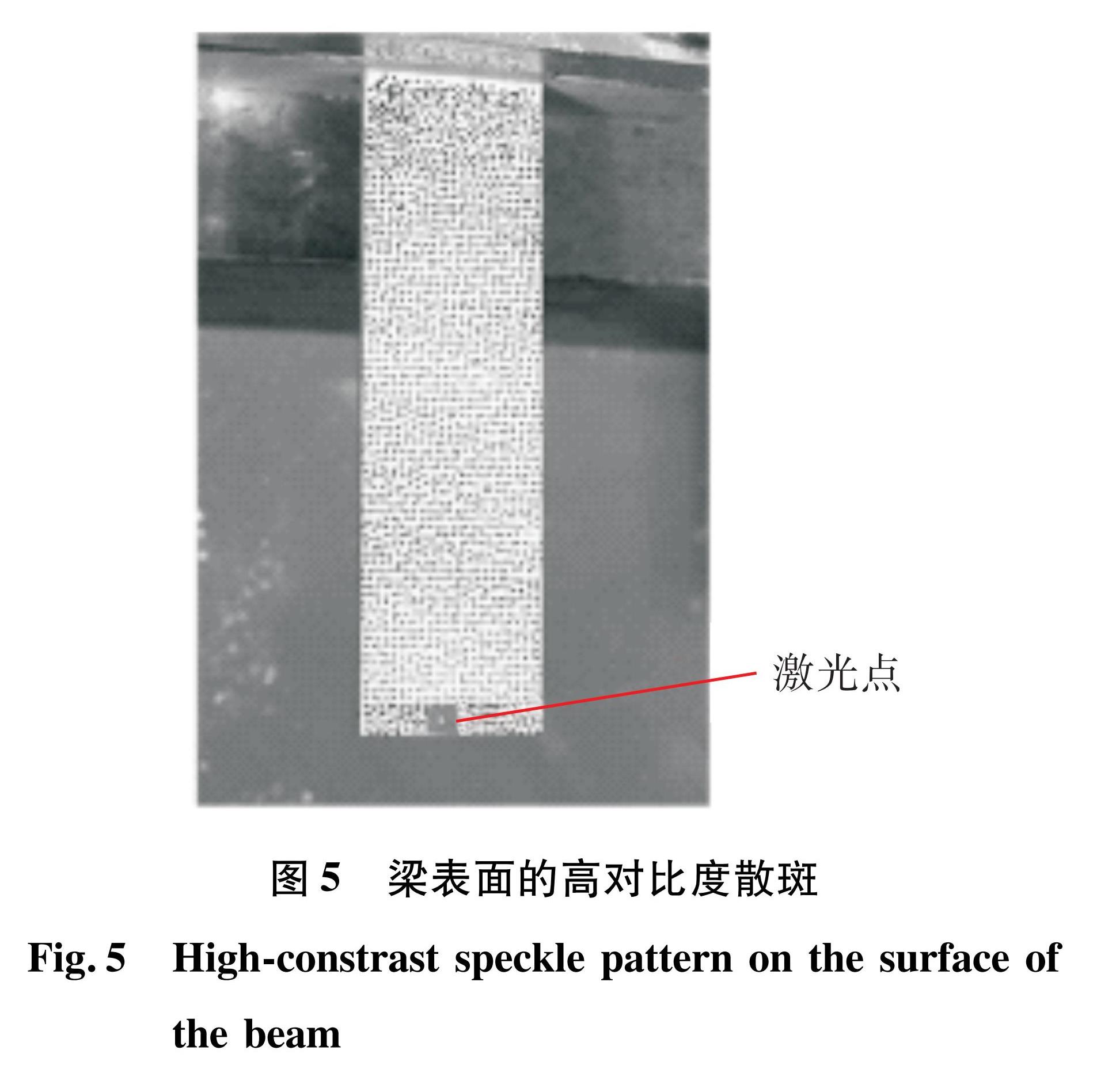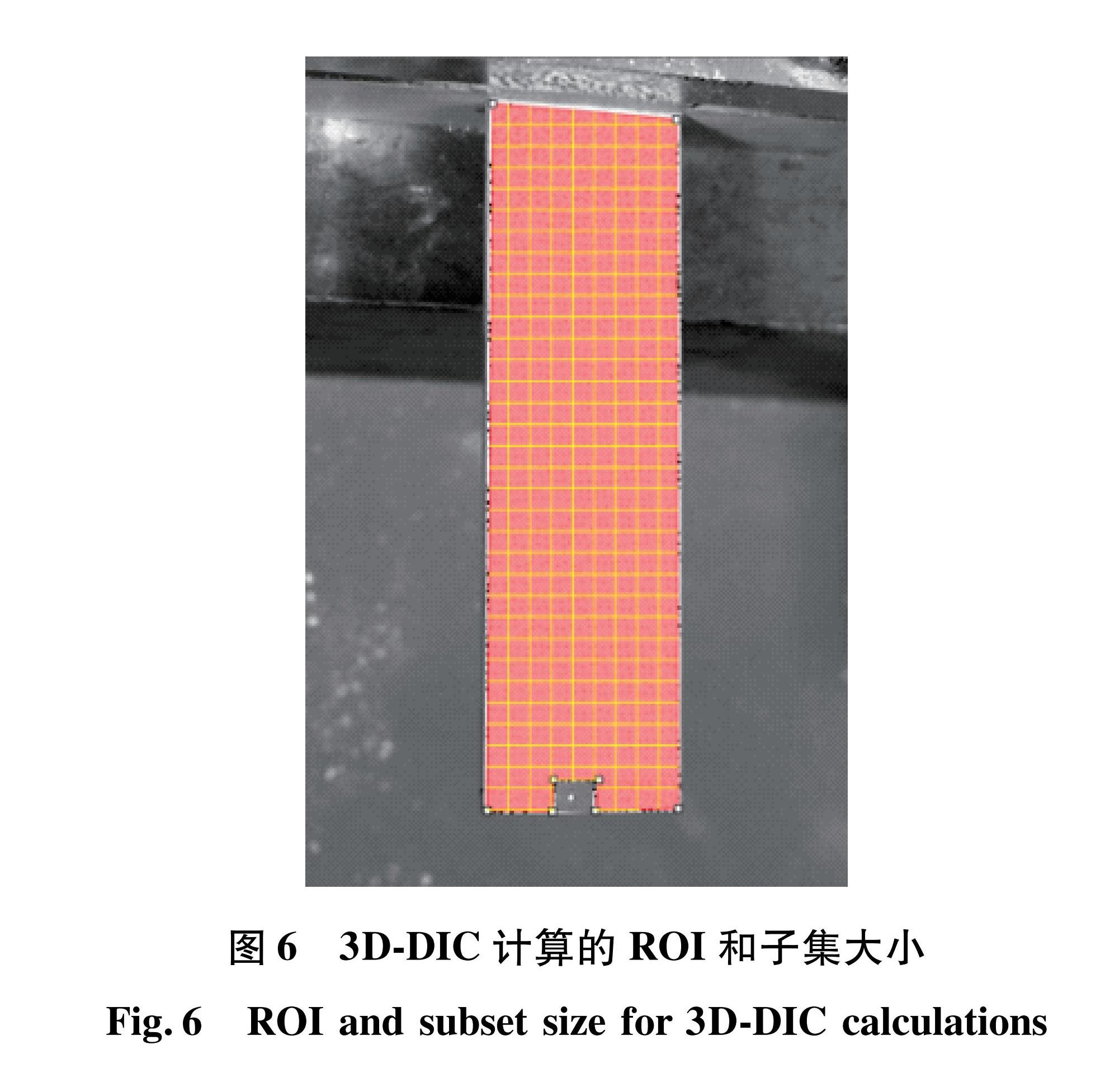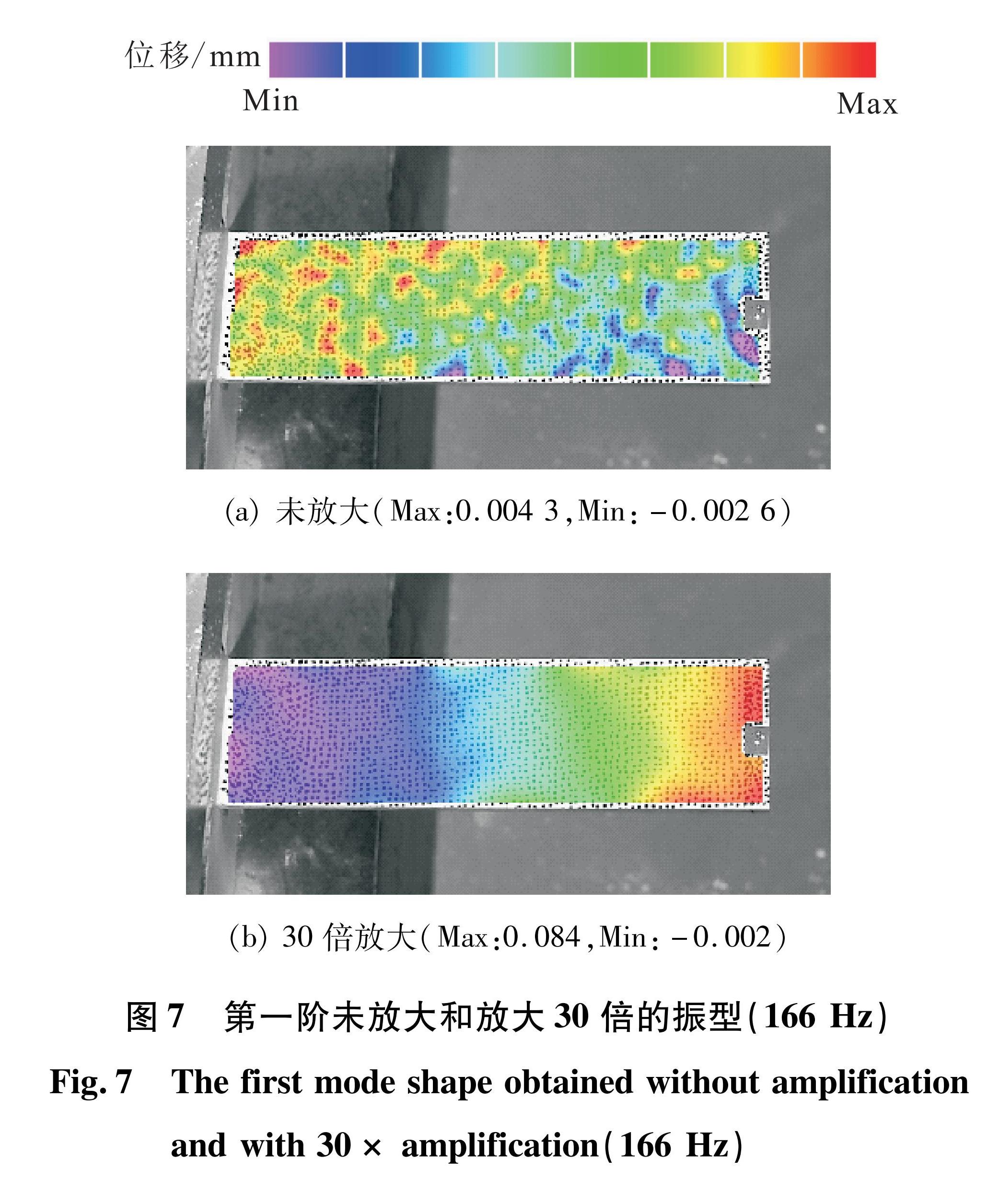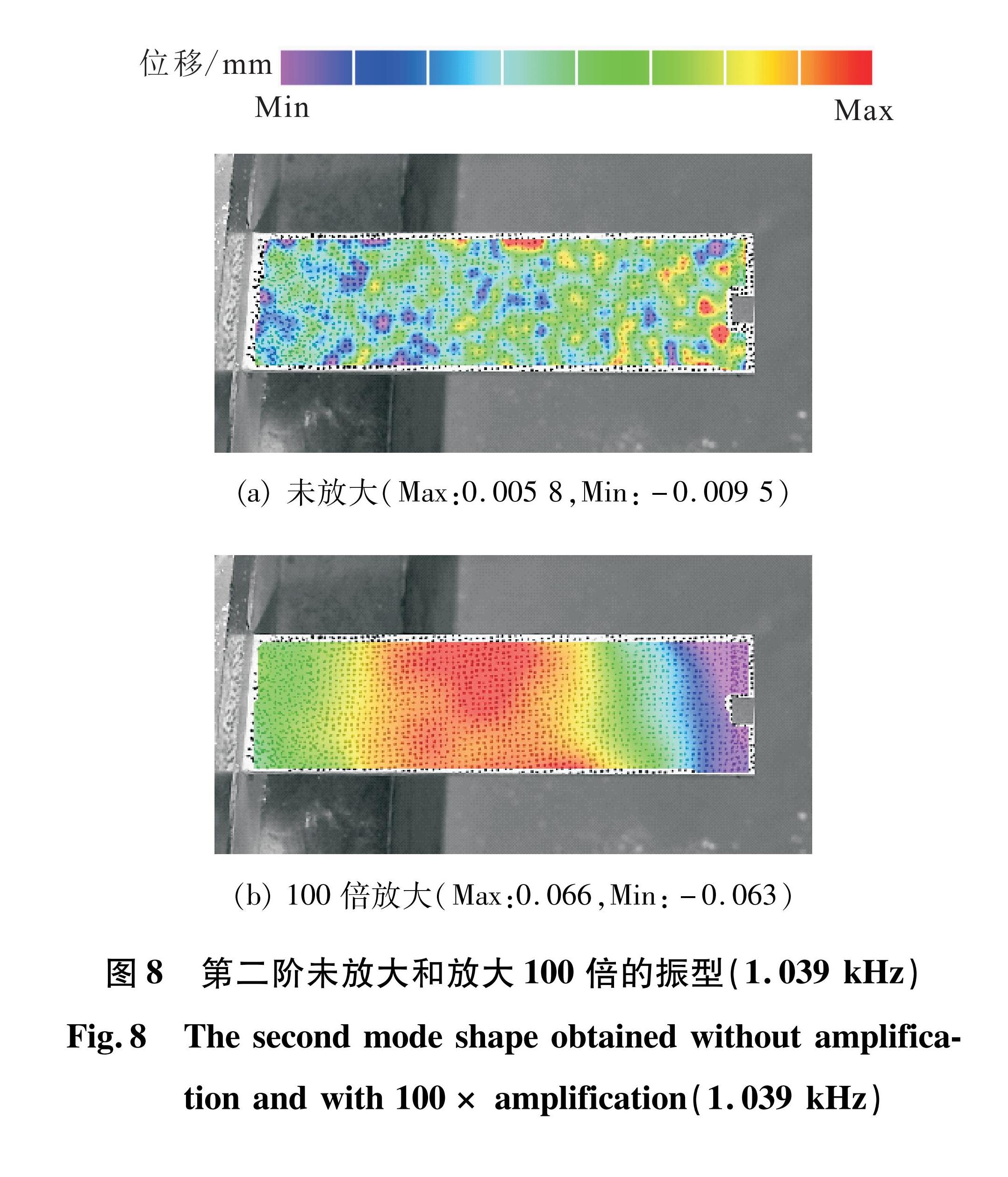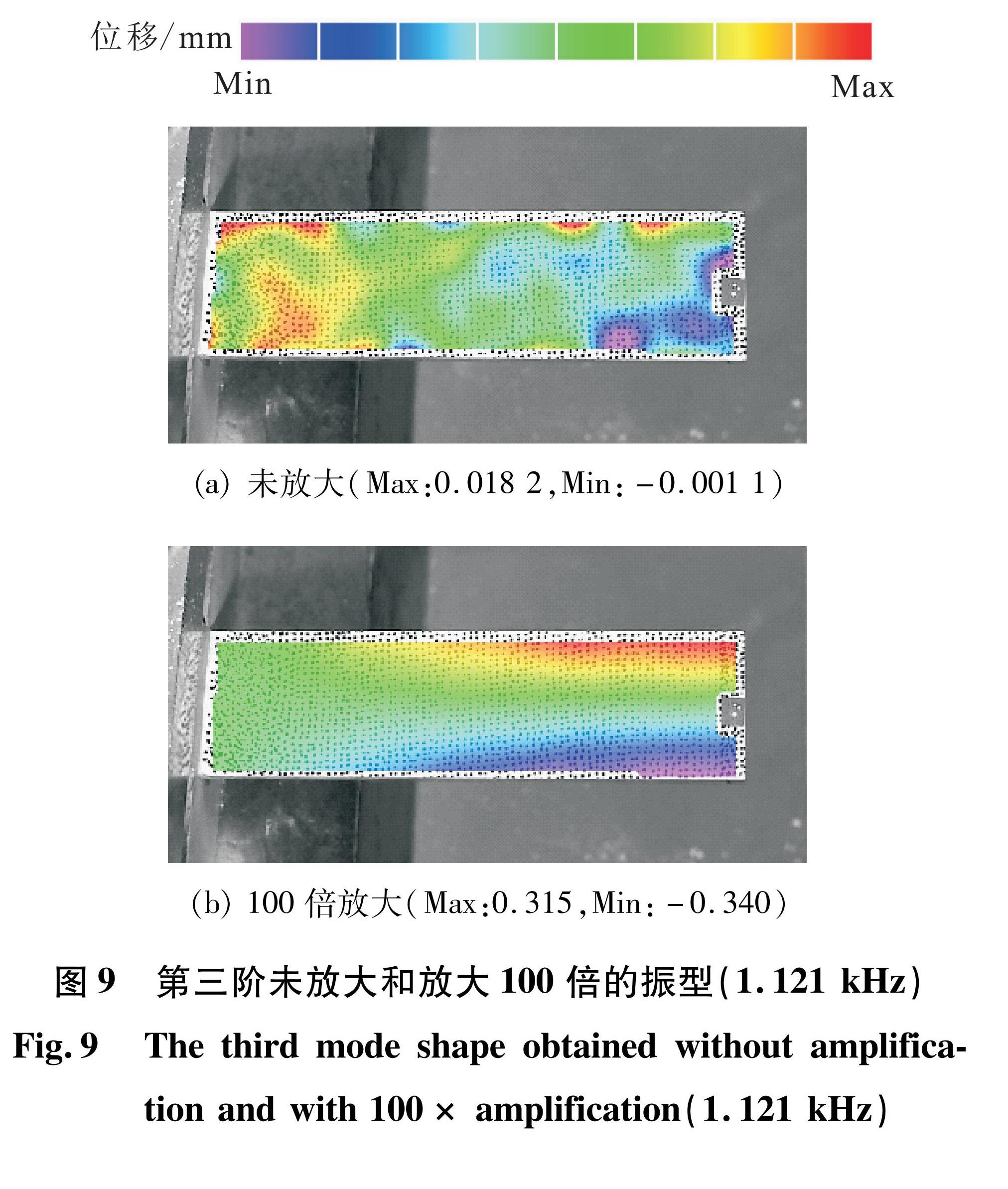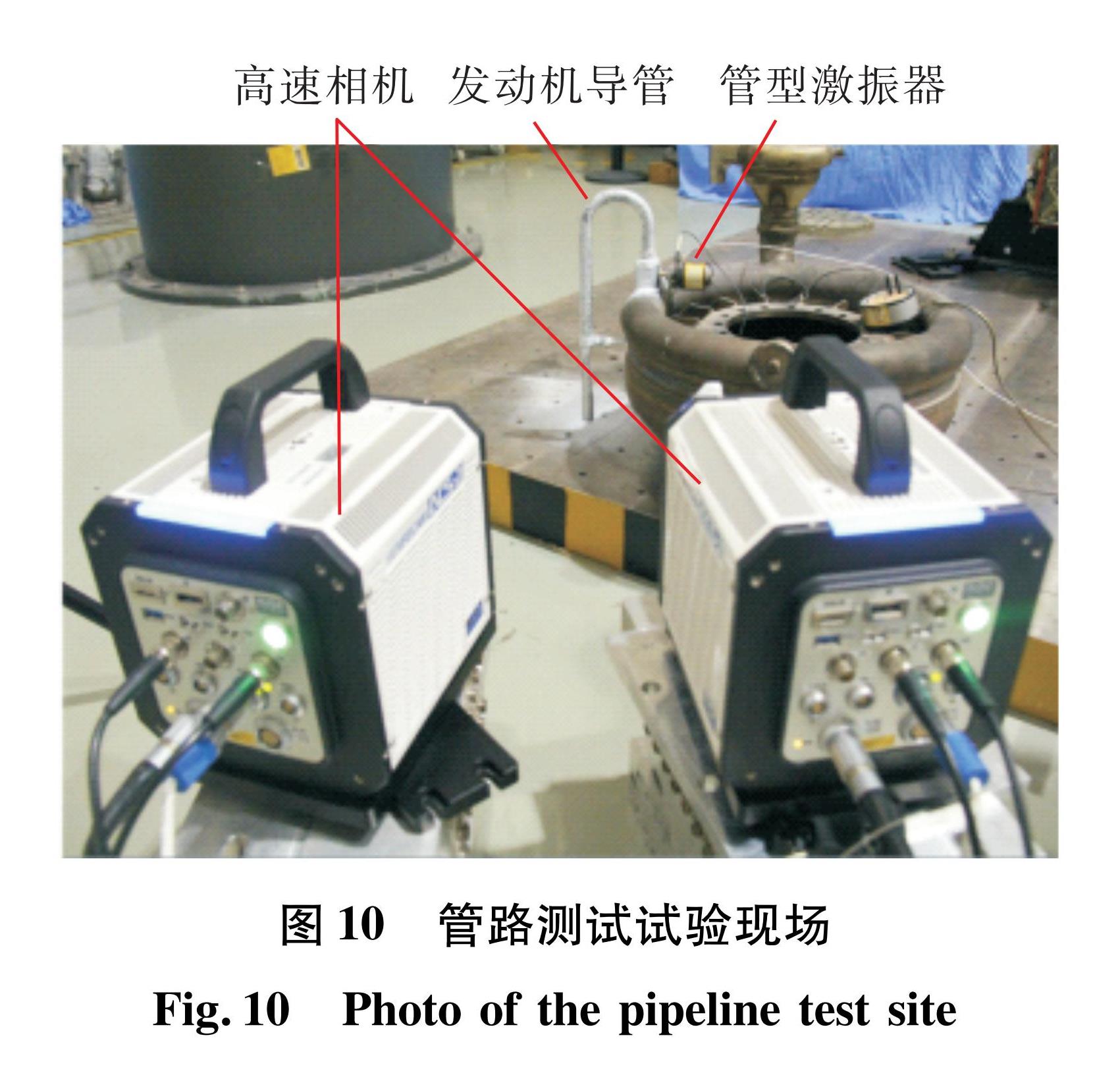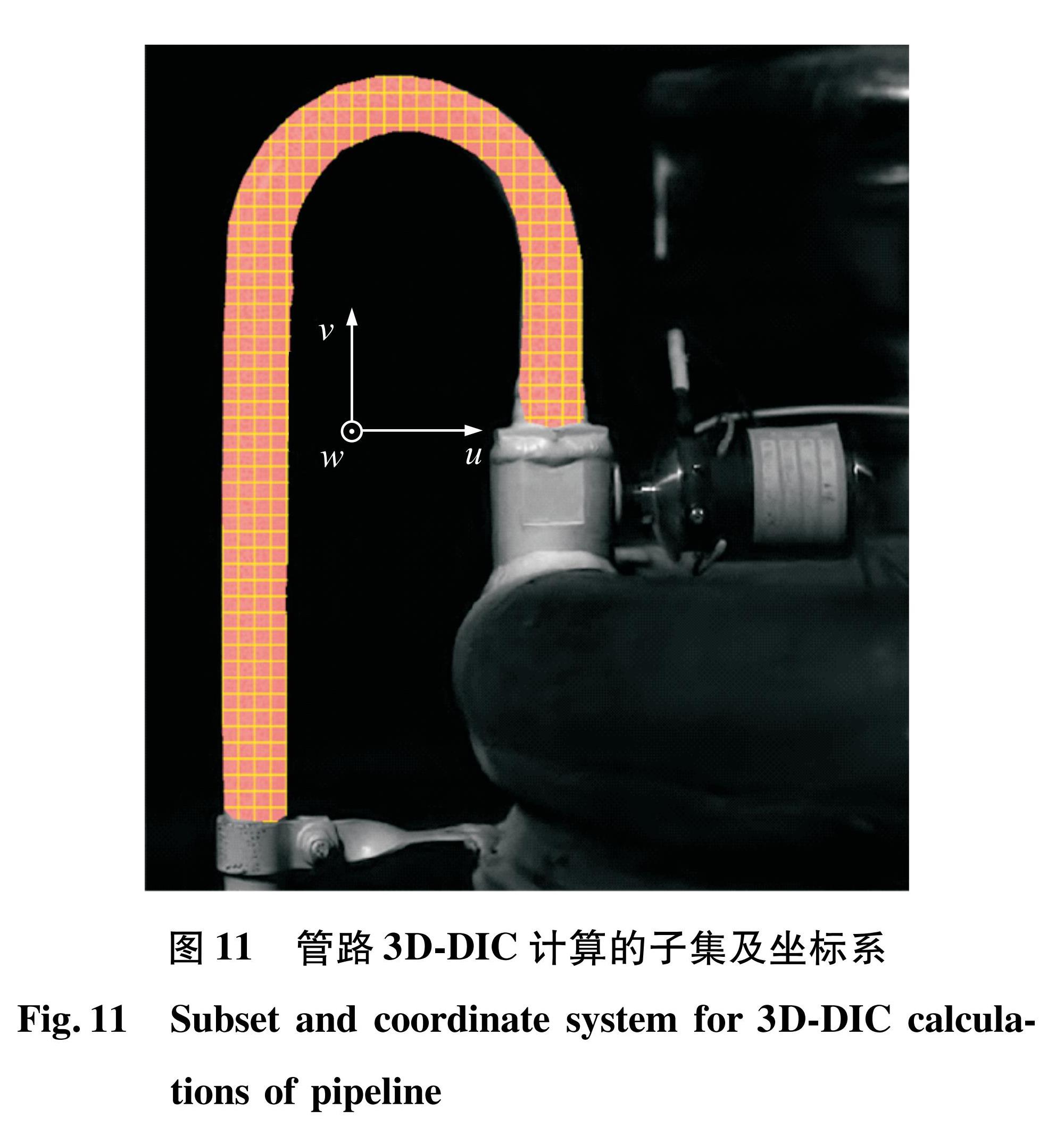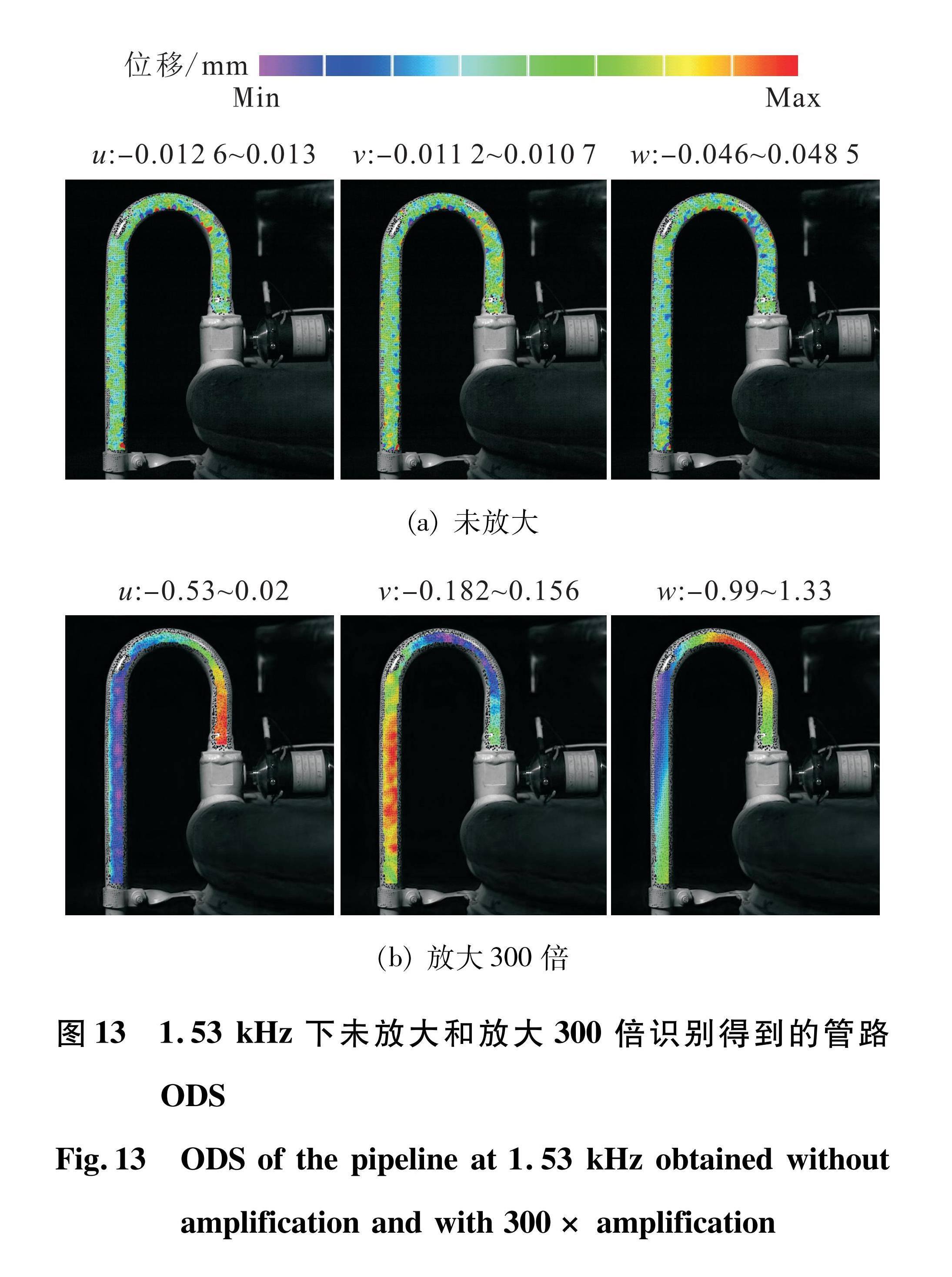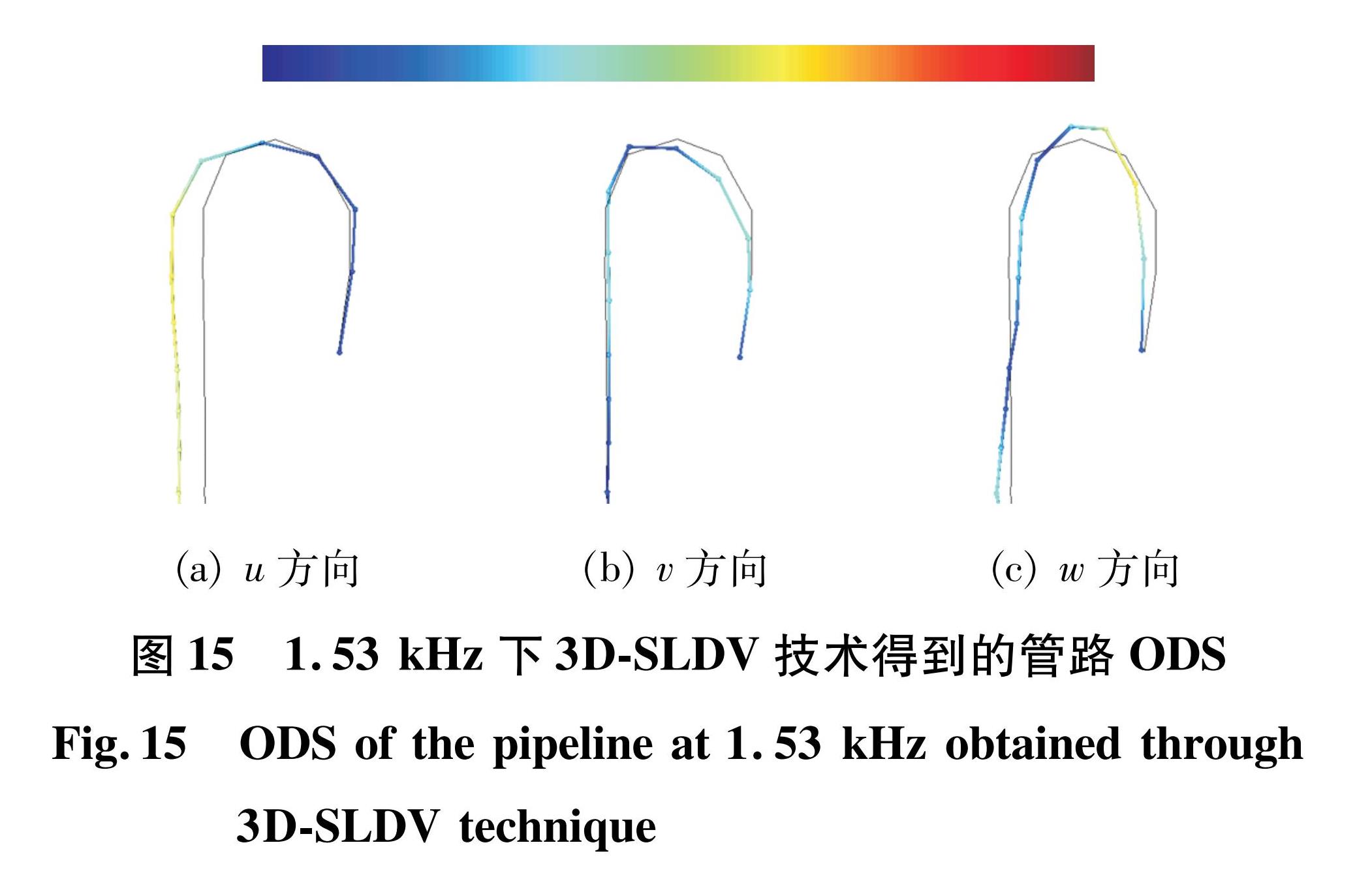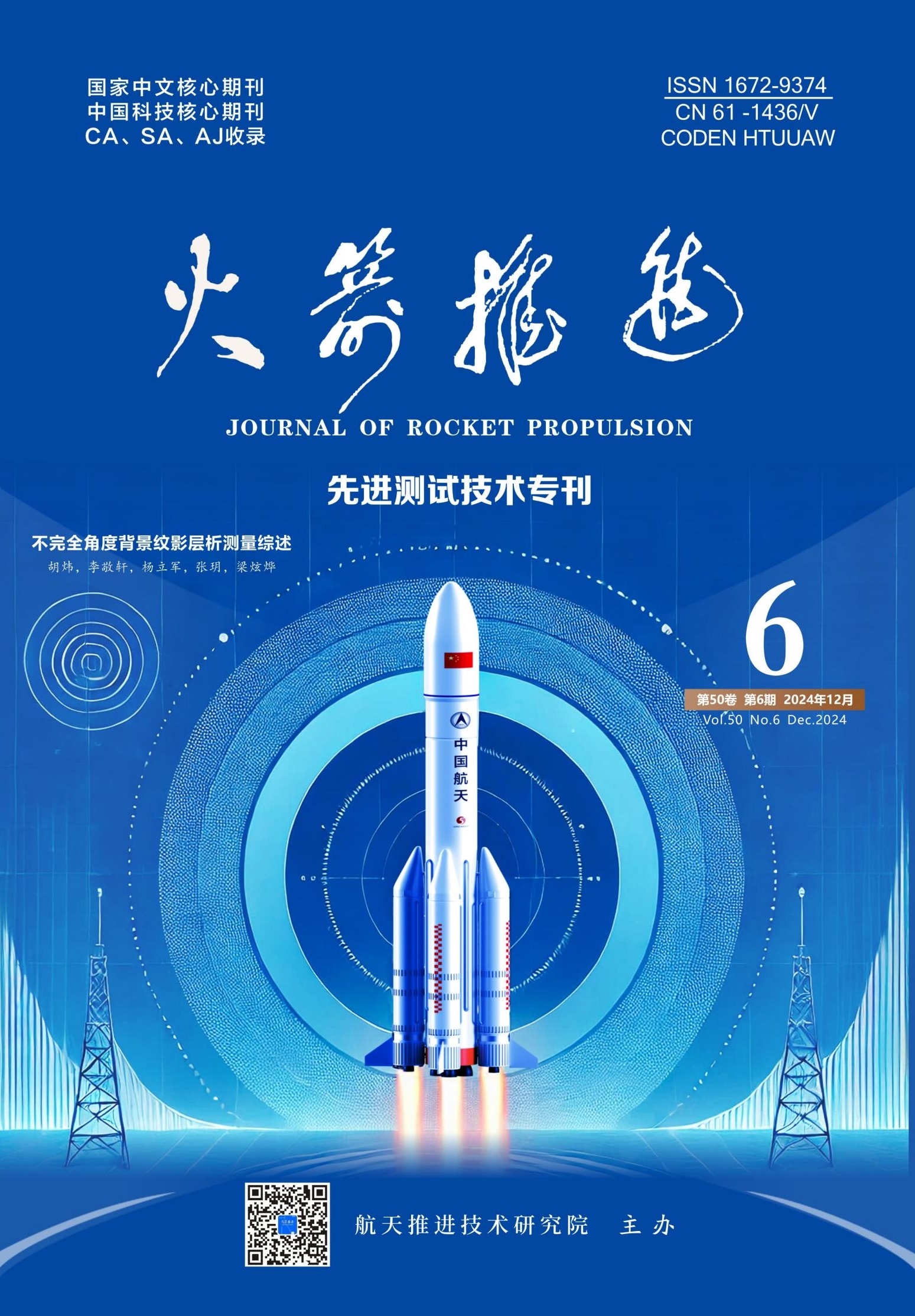作者简介:闫 松(1988—),男,博士,高级工程师,研究领域为液体火箭发动机结构动力学、视觉测量技术。
掌握液体火箭发动机管路的模态特性对于管路的抗疲劳设计是至关重要的。由于发动机的激励频率较高,相应的高阶振型对应的结构位移幅值通常非常小,往往被测量系统的本底噪声所掩盖。采取了一种新的方法,通过对定频激励下立体相机拍摄的振动视频进行运动放大,进而对放大后的图像序列进行三维数字图像相关(3D digital image correlation, 3D-DIC)分析,可以从系统本底噪声以下的位移中识别出结构位移,实现对结构高阶三维振型的精确测量。在合适的放大倍数下,未出现由于运动放大导致的散斑图像对应关系恶化,进而导致3D-DIC计算失败的问题。以悬臂梁为实验对象,采用微型激振器以前三阶固有频率激励结构,从低于本底噪声的位移响应中获得了悬臂梁的前三阶离面振型,与三维激光扫描测振技术(3D scanning laser doppler vibrometer, 3D-SLDV)所得的振型高度吻合。此外,成功地将该技术应用于实际的液体火箭发动机导管的高阶三维振型辨识,获得了3个空间分量的振型结果。该方法结合了运动放大的直观性和3D-DIC的定量分析的优势,对于发动机关键结构在低量级正弦激励下的三维振型分析具有应用价值。
Understanding the modal characteristics of the pipelines in liquid rocket engines is crucial for their fatigue-resistant design. Due to the high excitation frequency of the engine, the structural displacement amplitude generated by the corresponding high-frequency mode shape is usually very small, which is often masked by the background noise of the measurement system. A new approach of magnifying the vibration videos captured by a stereo camera under fixed-frequency excitation was adopted. Subsequent three-dimensional digital image correlation(3D-DIC)analysis of the magnified image sequences enables the identification of structural displacements from displacements below the system's background noise level, achieving accurate measurement of high-order three-dimensional modes of the structure. Under appropriate magnification multiples, problems such as the deterioration of the correspondence of speckle images due to motion magnification and subsequent failure of 3D-DIC calculations did not occur. A micro-vibrator was used to excite a cantilever beam at the first three natural frequencies. The first three out-of-plane modes of the cantilever beam from displacement responses below the background noise was obtained. These results highly agree with the modes obtained using 3D scanning laser doppler vibrometer(3D-SLDV)technique. Moreover, this technique was successfully applied to the high-order three-dimensional modal identification of actual liquid rocket engine pipelines, yielding modal results for three spatial components. This method combines the intuitiveness of motion amplification and the quantitative analysis advantages of 3D-DIC. It shows application value for three-dimensional modal analysis of key engine structures under low-magnitude sinusoidal excitation.
